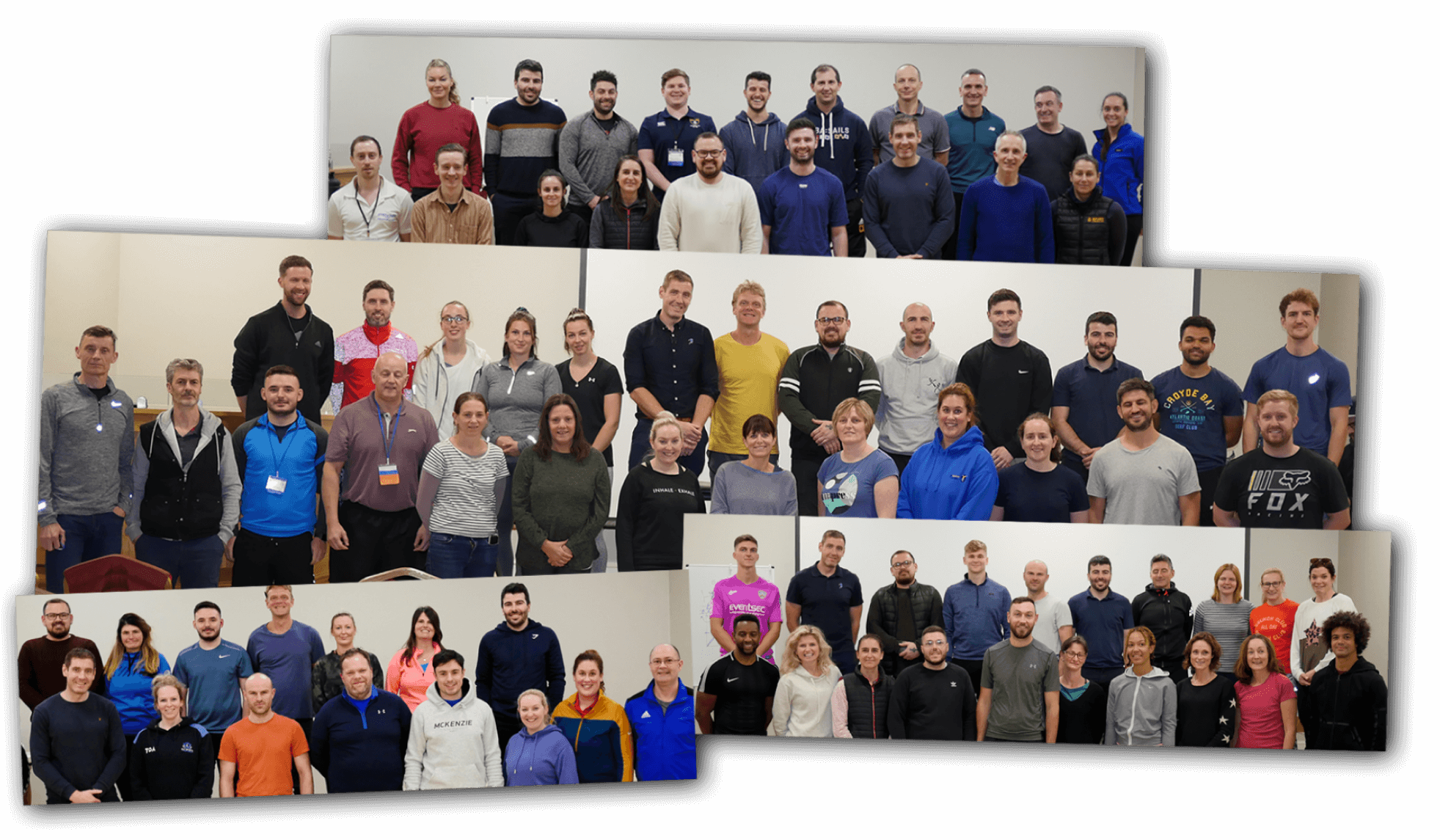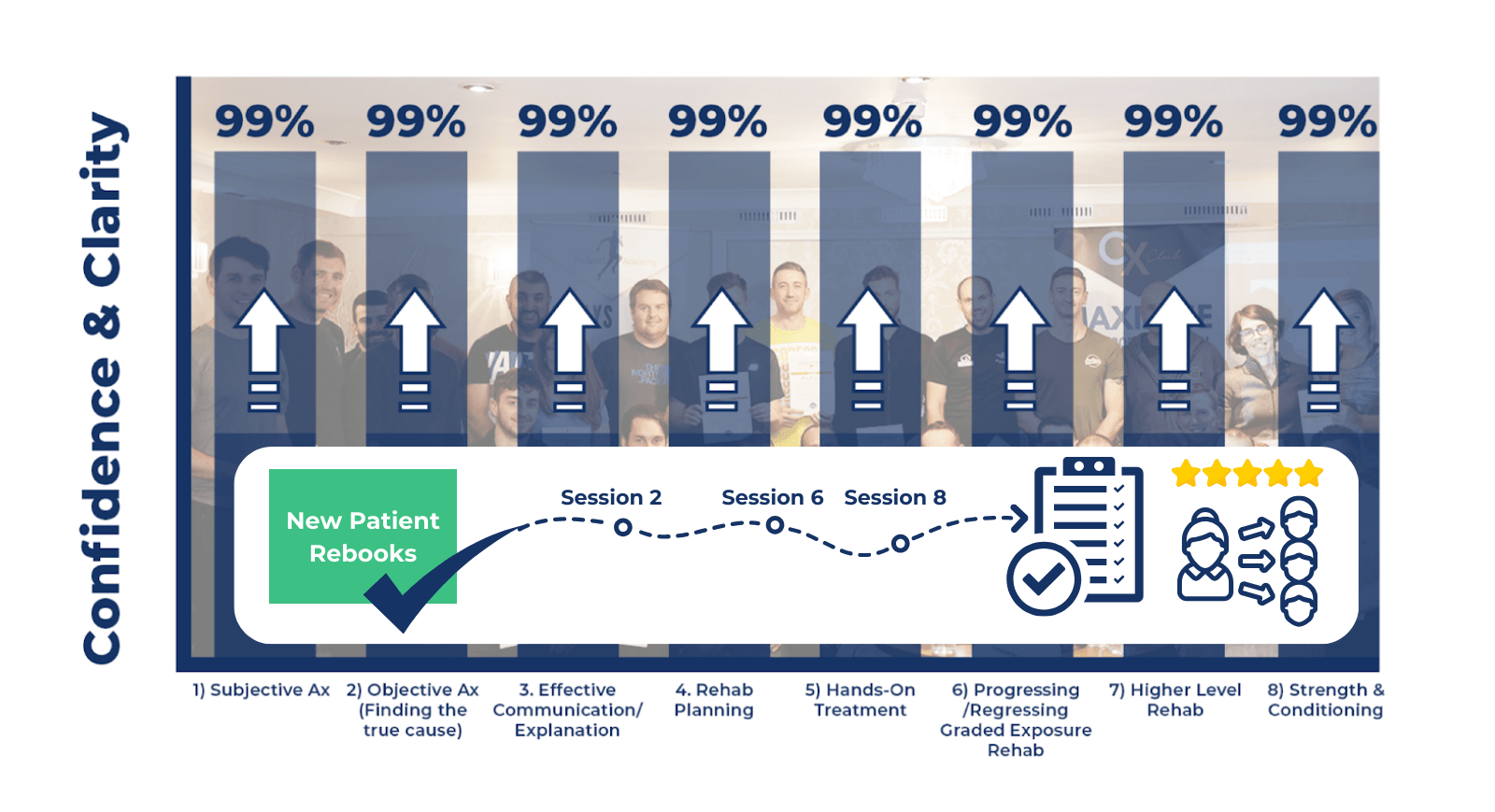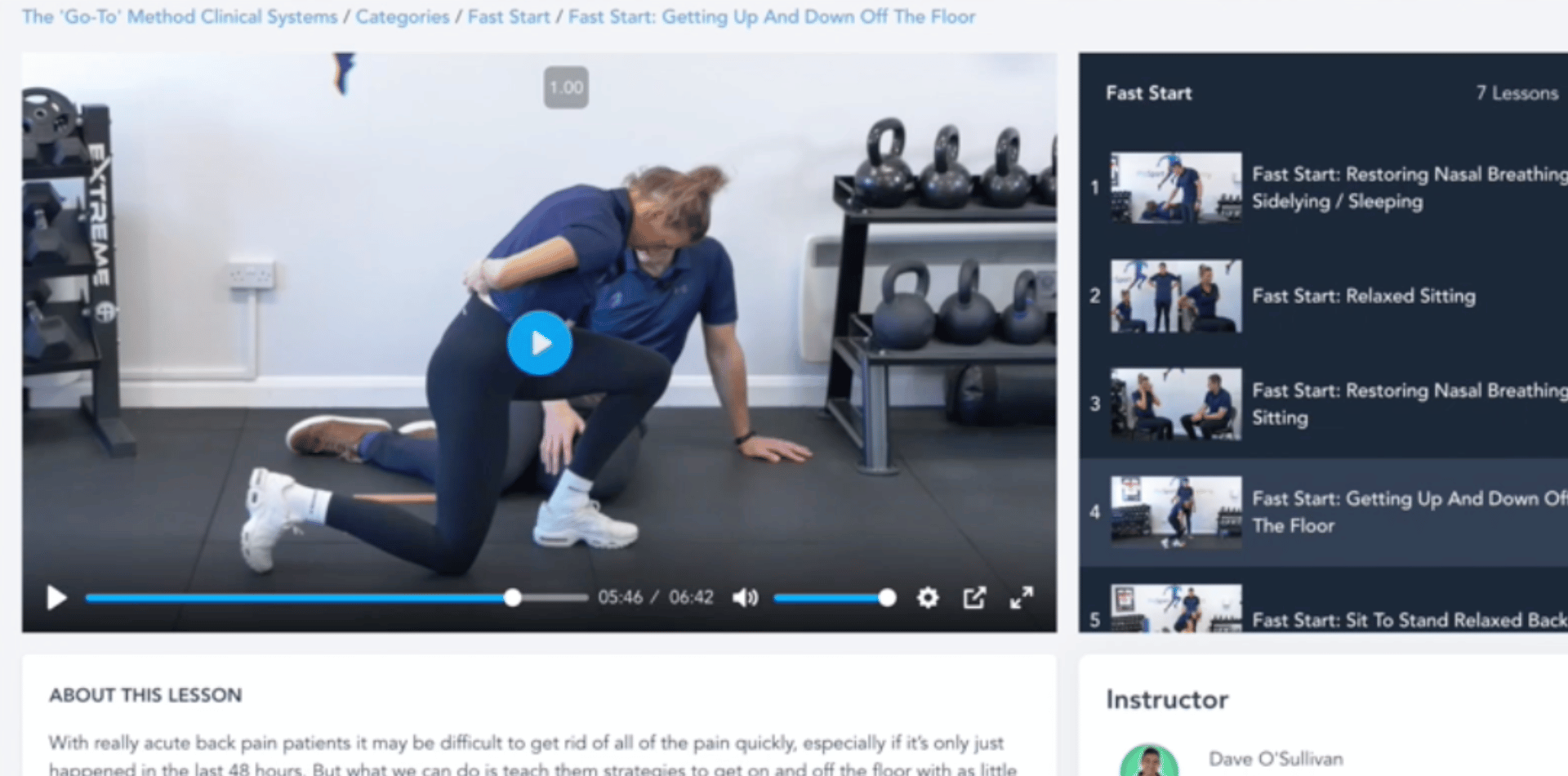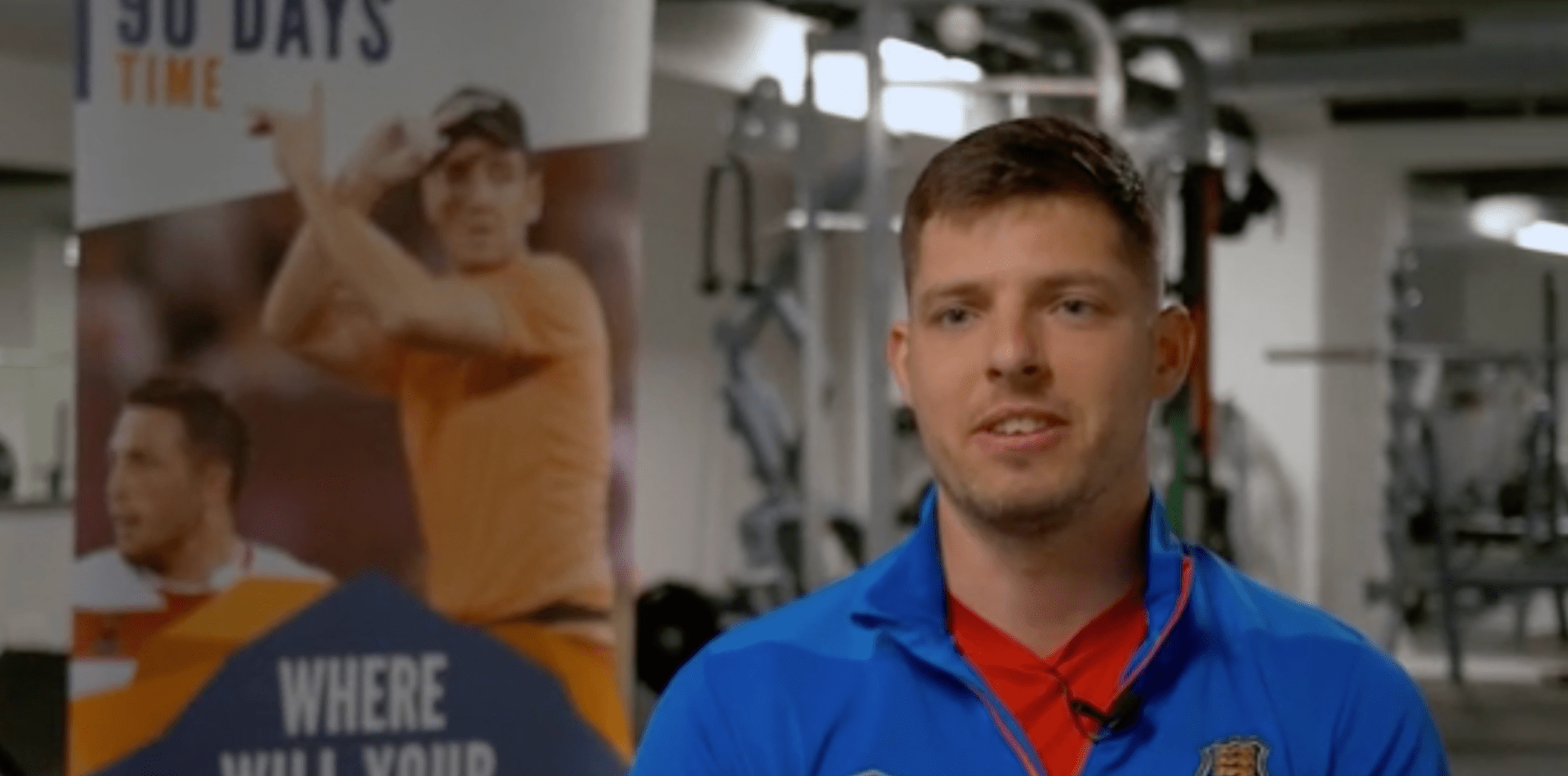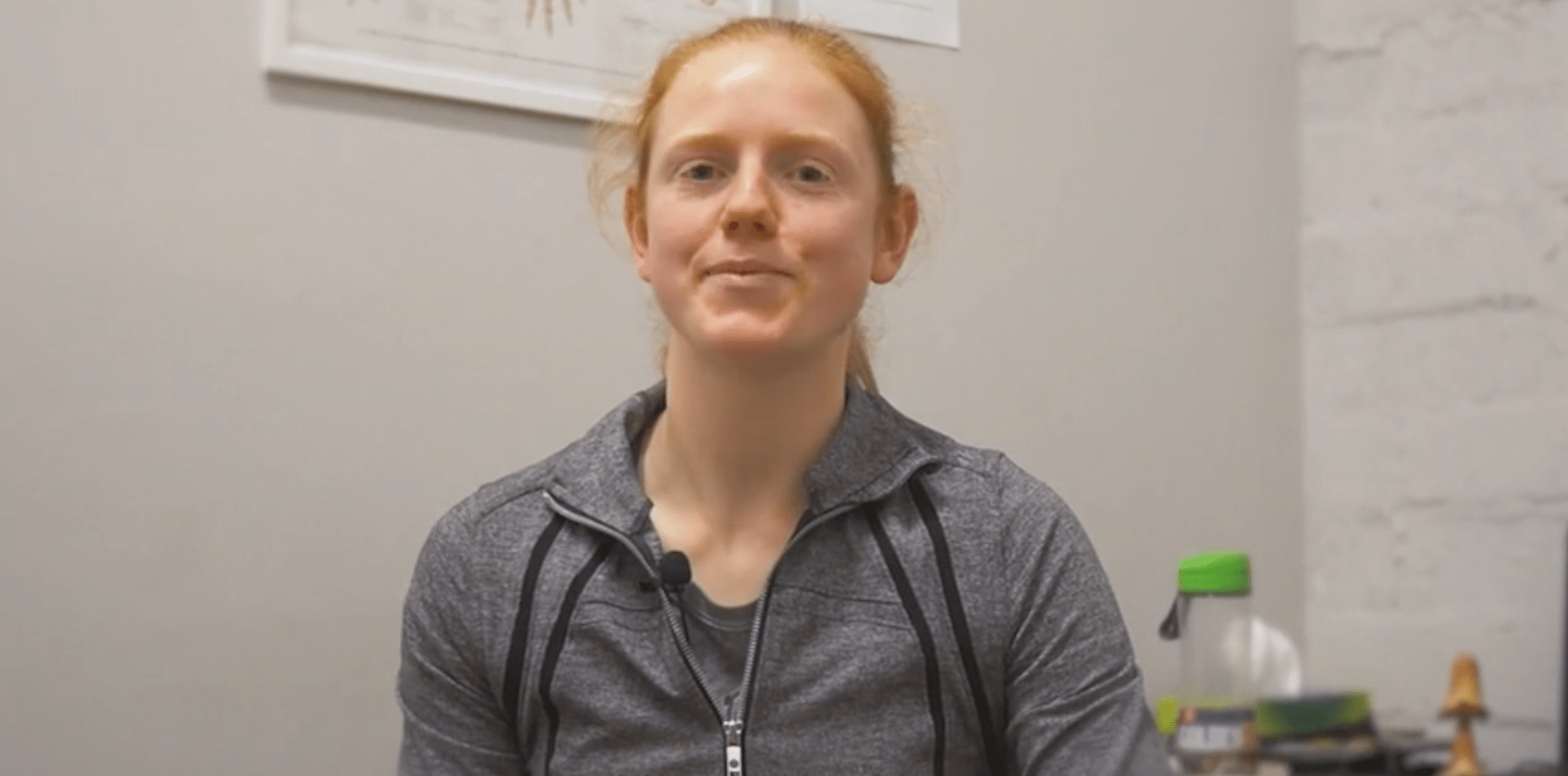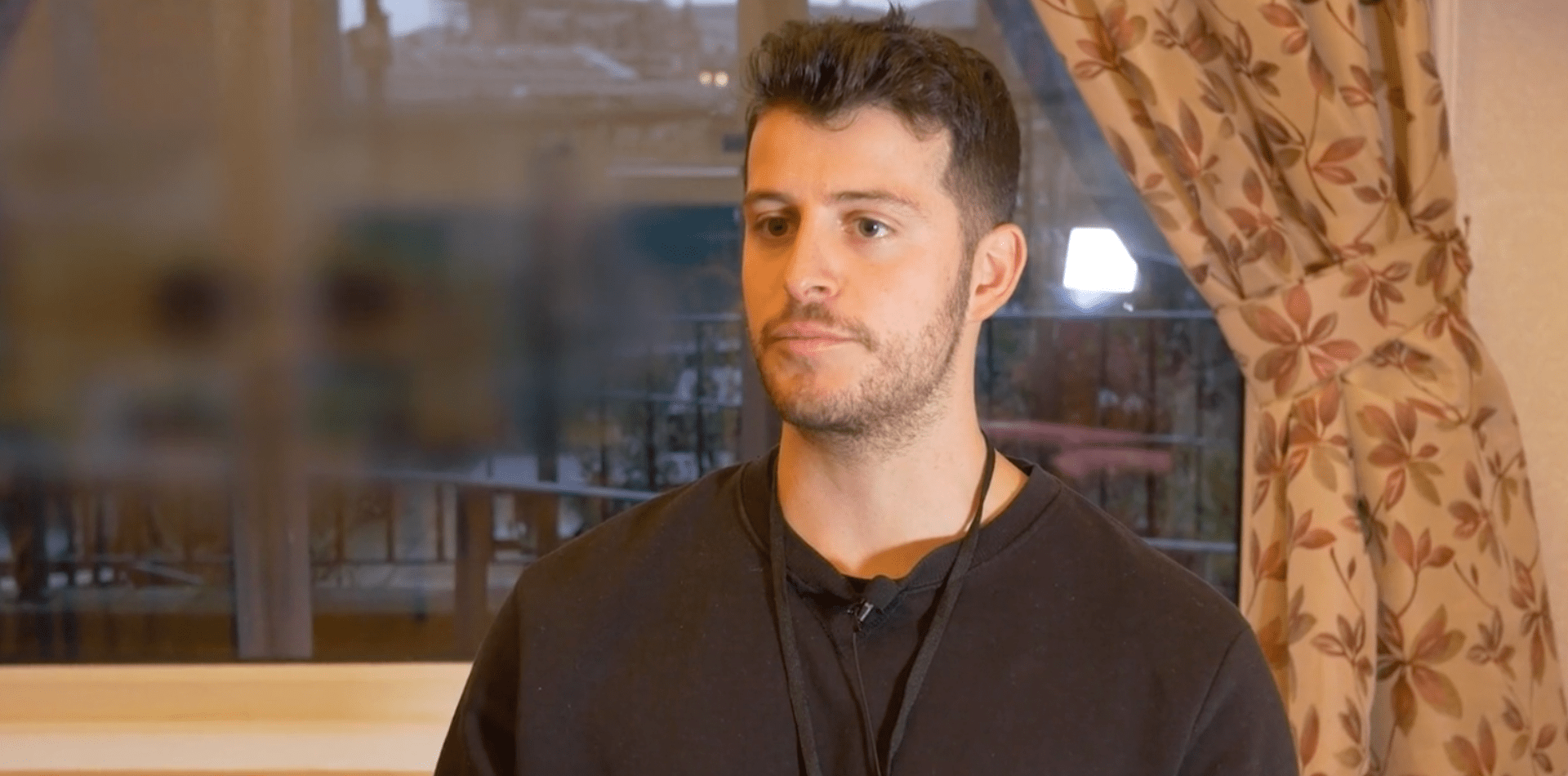
This System Is Trusted By...
Organise All Your Knowledge Into A Step-By-Step System That Gives You A Competitive Edge For Solving Complex Cases
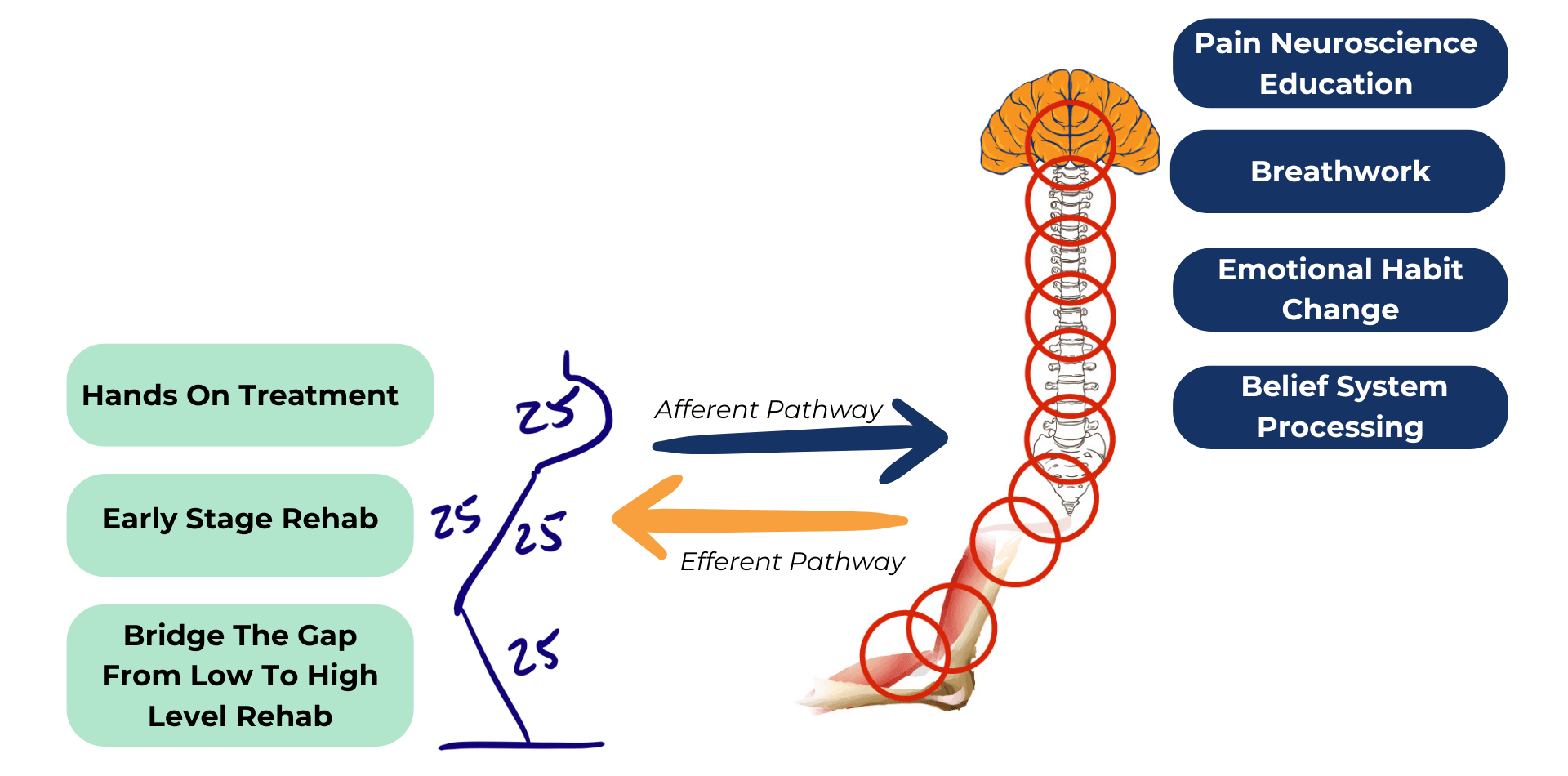
The ‘Go-To’ Therapist Mentorship gives you a structured step by step system to ‘troubleshoot’ any patient who walks through your door.
It will give you the real skills needed to thrive in private practice that you were not taught in University.
This Mentorship isn’t just a course, it’s a coaching system for physios and other healthcare professionals.
It provides access to training modules, an expert community, and treatment plans derived from my experience as a leading sport physiotherapist.
It was designed specifically for clinicians like you, who feel ready to make the leap from competence to mastery.
Become A ‘Go-To’ Therapist In Just 90 Days
Make Sense Of Your Patients Symptoms And Find The Root Cause
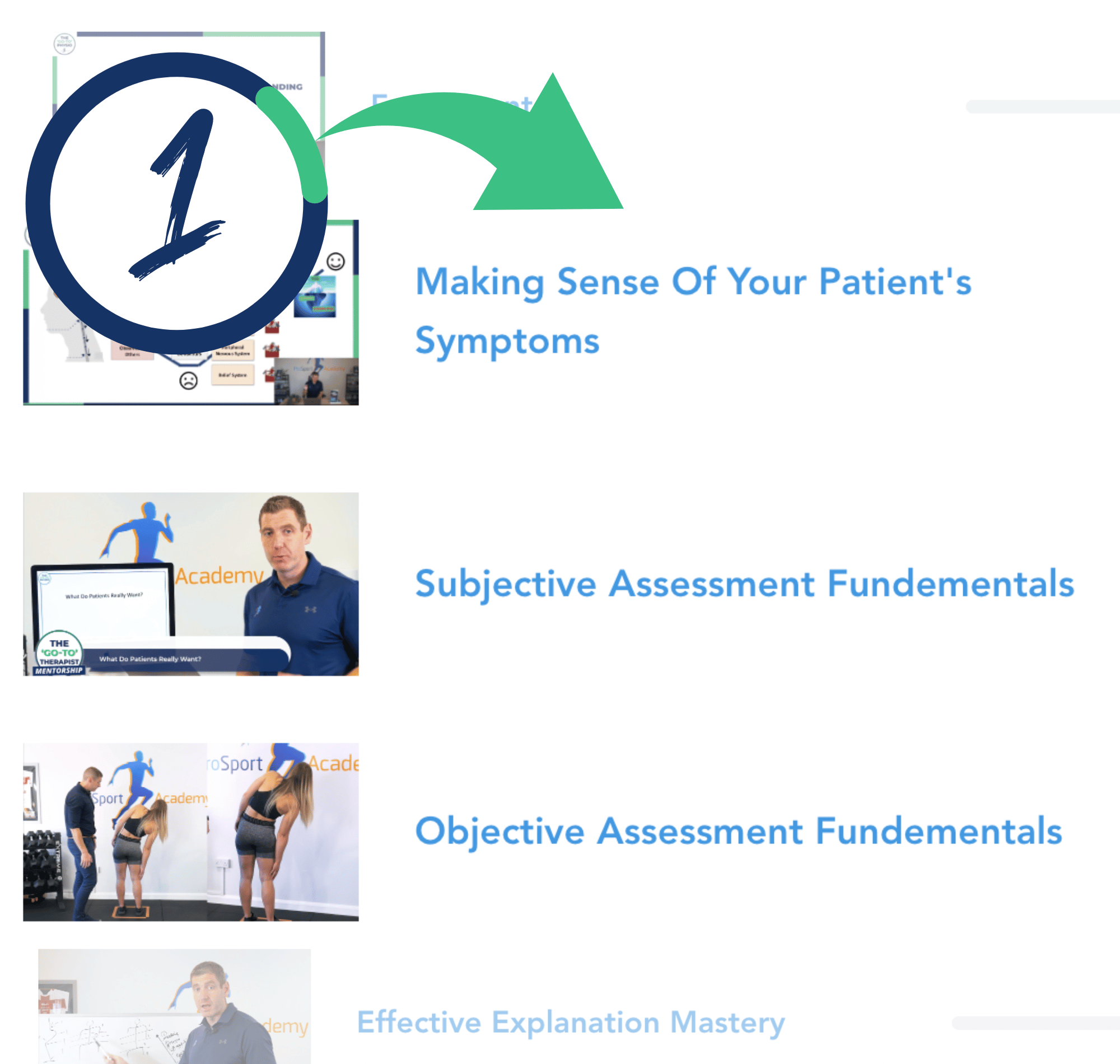
Finally make sense of your patients ‘vague’ and ambiguous symptoms so you can find the root cause of the problem. Ask higher quality questions in the subjective assessment and simplify your objective assessment to understand exactly where to start in your treatment plan.
Set Patient Expectations And Predict How Many Sessions It Will Take
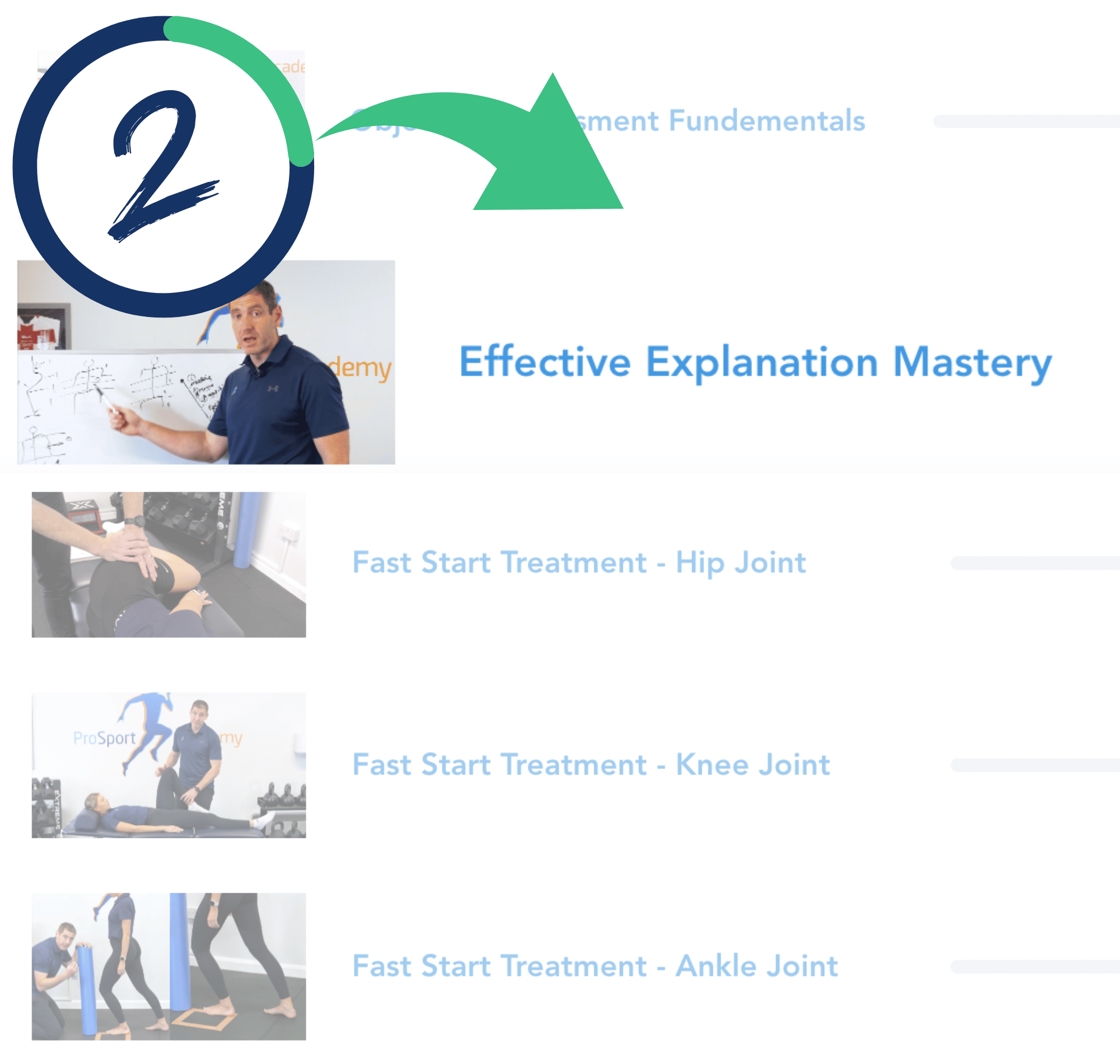
Design value based treatment plans that get patient ‘buy-in’ and adherence. Confidently predict how many sessions it will take so you can set expectations to give yourself the time required to deliver long lasting exceptional clinical results every time.
‘Start Fast And Ensure Your Patient Can ‘Feel The Difference’ In The 1st Session
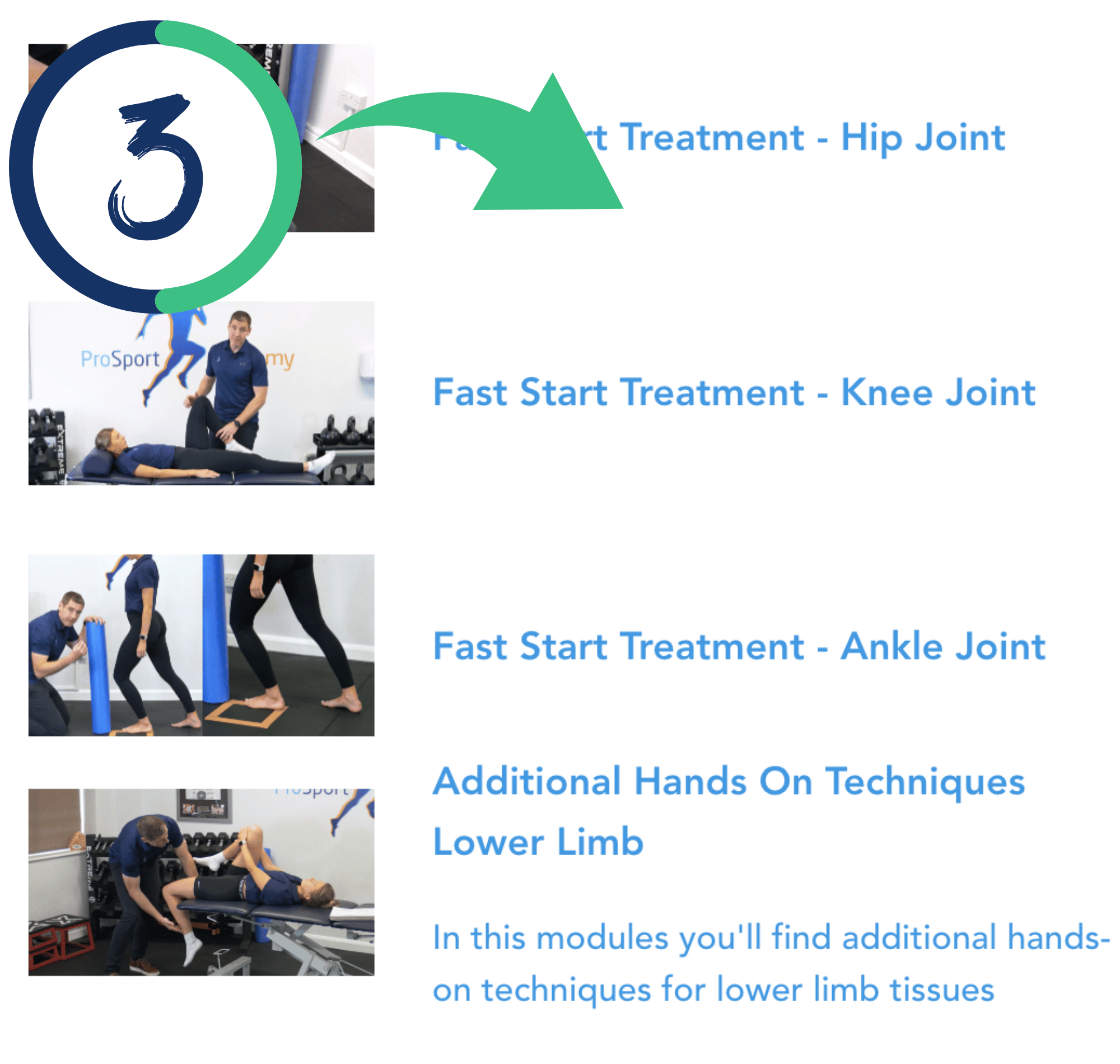
Clinically reason the main contributors to the pain experience so you can quickly and effectively execute hands on treatment techniques that get results fast. Ensure you get long lasting results by prescribing rehab exercises that your patient can ‘feel’ working immediately.
Ensure Your Patient Returns For The Next Session And Continues To Make Progress Each Session
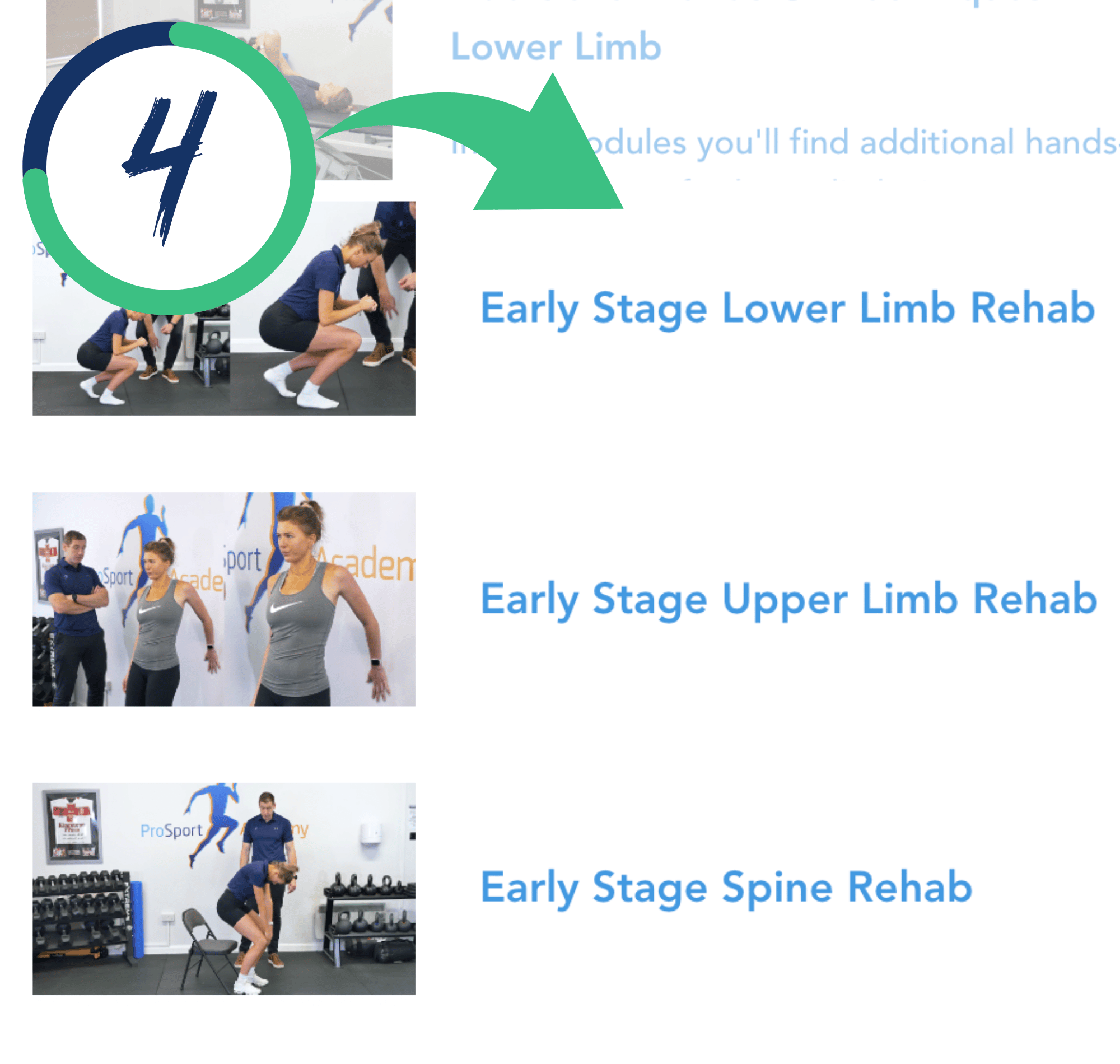
Prescribe rehab exercises that are easy to do and achieve the desired outcomes in a graded exposure manner. Enjoy a level of clarity and focus that has a clear next step in each session that ensures your patient keeps hitting key milestones.
Keep Your Patient Progressing Even When The Pain Eases
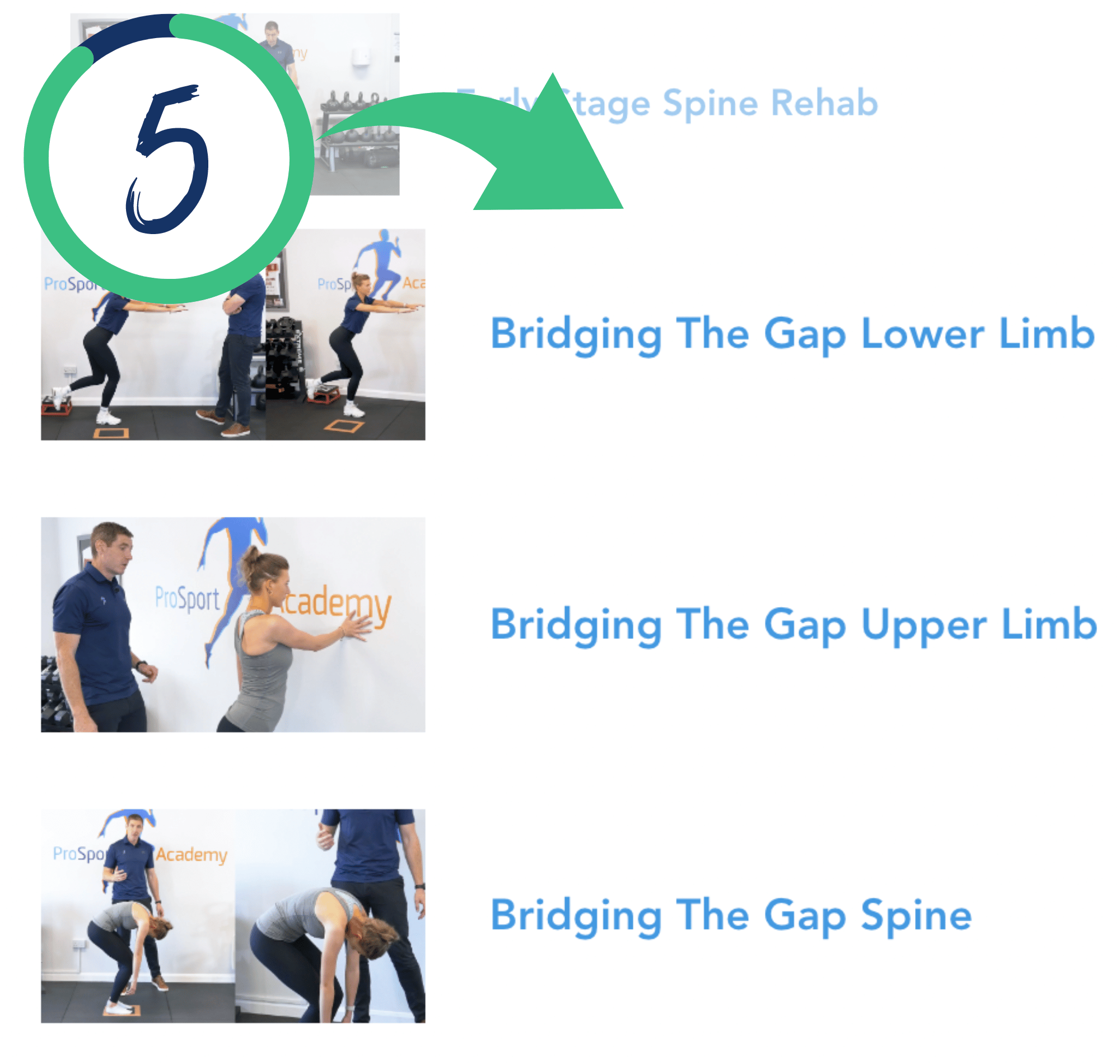
Confidently bridge the gap from low to high level rehab and maintain progress even when the pain has eased. Consistently exceed expectations and deliver the kind of results that EARNS reviews, referrals and the reputation as the ‘Go-To’ Therapist.
Everything You Need From The Initial Assessment To Successful Discharges
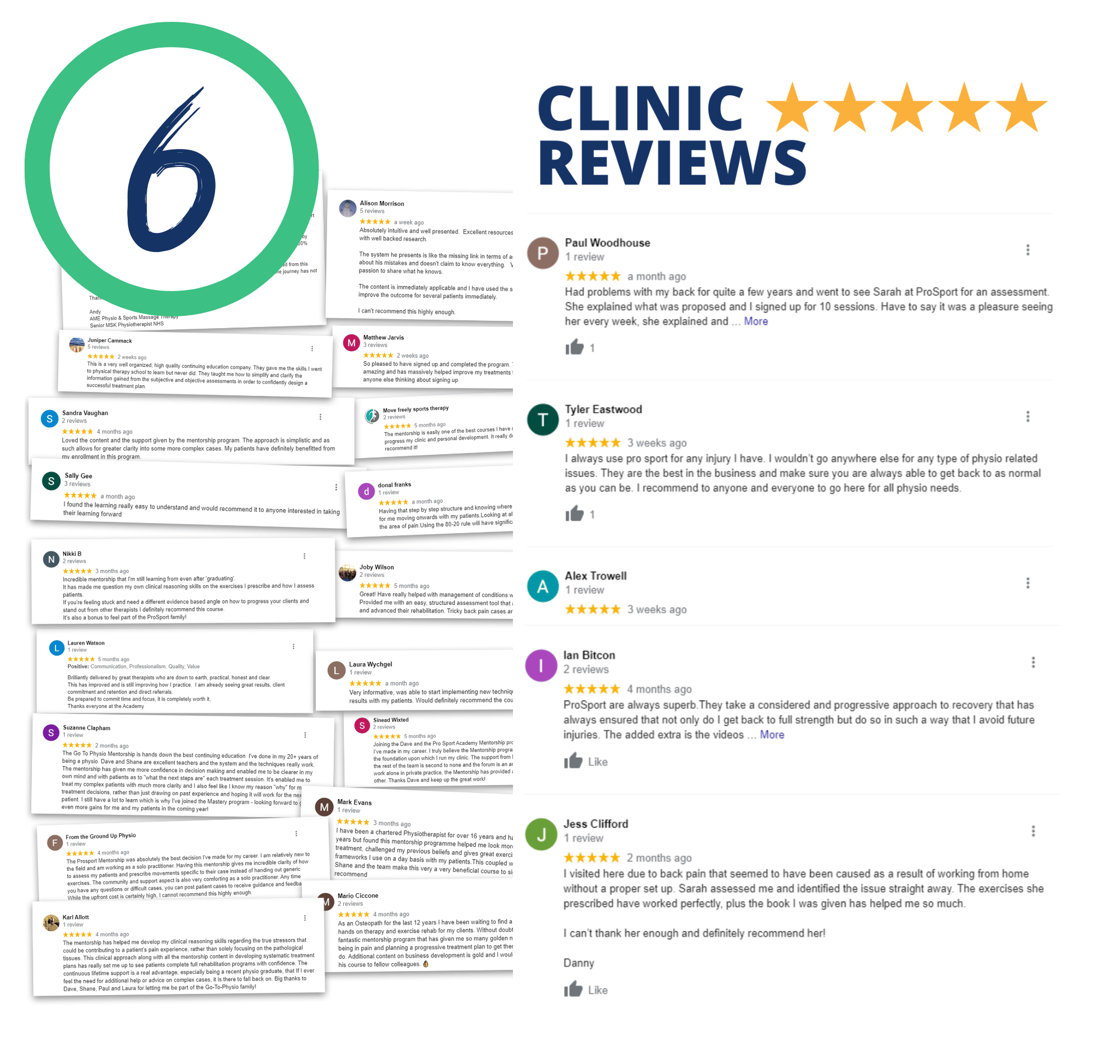
Gain the knowledge, skills and techniques that allow you to make better quality decisions that deliver better quality results for your patients. Every assessment, hands-on, rehab and ‘non-physical stressor’ technique you need to thrive in private practice.
Become A ‘Go-To’ Physio In 3 Simple Steps
Fill Out Your Application Form
So we can be sure that we can help you, simply fill in your application form. We will then reach out to learn more about your goals and see if you are a good fit for the mentorship program..
Install The ‘Go-To’ Physio System
Access the members portal with the complete step by step framework. All lessons are short, sharp and highly practical so you can implement and see results immediately.
Get Expert Help Executing
Get expert coaching every step of the way including a ‘difficult patients forum’ and join a community of over 1,000 ambitious clinicians on the same path to clinical excellence.
I’ve Been In Your Position Before…
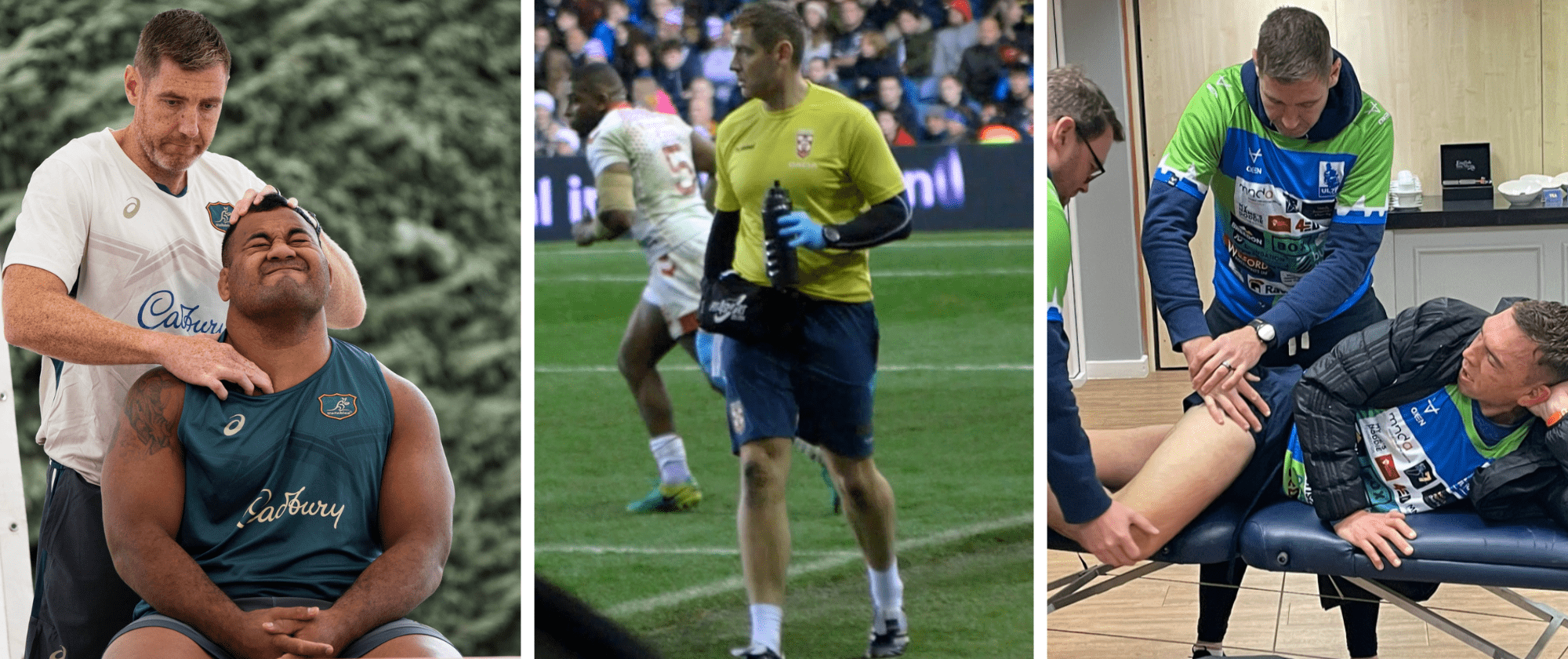
As a physiotherapist myself, I know how frustrating it is when you feel stuck in your career. Even though you’ve reached a level of skill and competence that sets you apart from many of your peers, you know there’s still a gap between where you are today and where you could be.
When faced with challenging cases, you start second-guessing your approach. You question whether you have the knowledge and skills to treat patients with more complex issues. And then you start worrying about how this could impact your reputation in the wider industry.
I know this feeling myself. Early in my career while working with my dream team (Munster Rugby), two players had to retire on my watch. It was at that moment that I said enough was enough, and I fully committed to building a complete and robust step-by-step system that didn’t rely on ‘magic bullets’ or ‘techniques.
If you’re experiencing similar challenges in your career, then you might be missing some critical elements in your system that are necessary for your success and your peace of mind. I learned that with the right direction, a shift in mindset, and a change of method, you can put an end to those feelings of frustration.
You want to be able to grow your practice and have other physiotherapists come to you for advice about resolving complex cases. You want your skills to be so refined that your colleagues see you as someone who has mastered clinical practice.
When I changed my approach and added more structure, my patients with complex issues started recovering quicker. I stopped second guessing myself, and my peers started to see me as their ‘go-to’ physio for advice.
Drawing on all my years’ experience, I developed this program to help you achieve clinical mastery too. It’s designed to help you make progress with those challenging cases and grow your patient list to the point that you need to take on your own employees.
This is about more than boosting your skills. It’s about cementing your reputation as an expert clinician – one who other physios look to for guidance.
How Often Do You Find Yourself In These Situations…?
- Assessing a patient with complex issues, but you feel unsure of where the root issue lies. Self-doubt creeps in, making you second-guess your skills.
- Designing a treatment plan, but you start to question if it will fully resolve your patient’s complaints. A voice asks: ‘‘is this really the right approach?’’
- You ‘wing’ the first session using the same hands on treatment and rehab techniques for every patient. You find yourself going through the motions and losing passion for the profession.
- A patient returns with the same stubborn symptoms. You get that sinking feeling that maybe you’re not skilled enough to help them.
- You progress a patient’s rehab plan to the next stage, but they never quite achieve the highest function you know is possible.
- A colleague asks for your advice with a challenging case, but you don’t feel confident enough to guide them.
If you find yourself in at least 2 of these situations on a weekly basis, then there’s a chance that you need to develop more structure in your approach and will benefit from a step-by-step system.
By refining your skills and knowledge you can reach a level of expertise where you can confidently assess, explain, and treat even the most complex, ambiguous cases.
In just 12 weeks, I can help you cement your reputation and ethically keep patients progressing. You'll start to see consistently great results that lead to more referrals – all without doubting yourself or losing patients.
My step-by-step approach lets you apply your knowledge and training into a cohesive, actionable framework that creates consistent, reliable, and lasting results.
The Go-To Therapist Mentorship Program
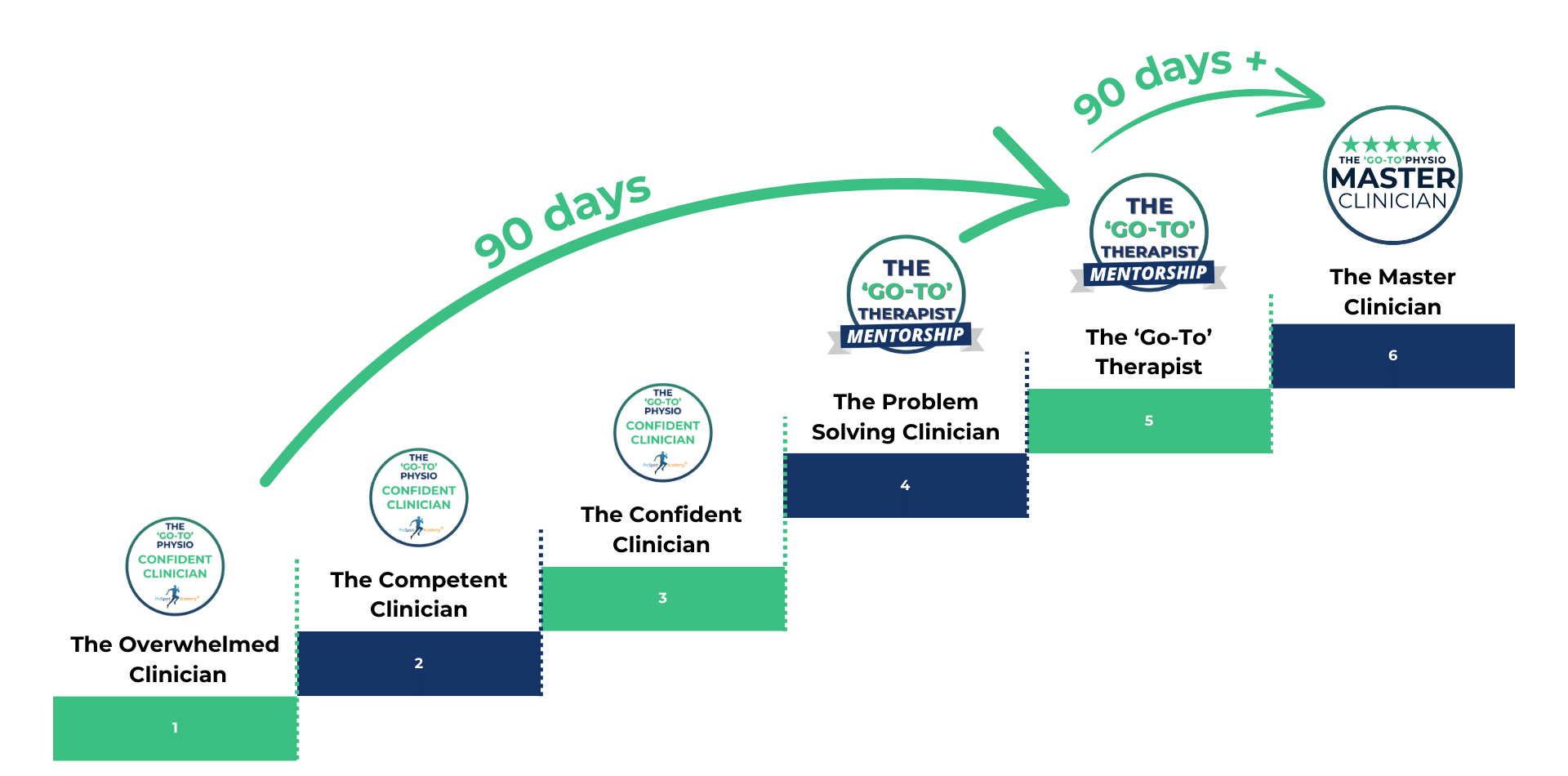
- Cutting-edge assessment frameworks to uncover subtle findings others miss.
- Insights into how you can confidently treat any patient by refining your assessments.
- A simple explanation model to turn perplexing pain presentations into simple, inspiring explanations and solutions.
- A treatment design masterclass that will show you how to create nuanced plans that resolve complex symptoms. No more trial-and-error treatments.
- Effective hands-on treatment techniques that get long-lasting results.
- Step-by-step rehab progression plans to improve patient function.
- Critical thinking and clinical reasoning models to solve even the most ambiguous symptoms.
- A simplified step-by-step system to help you understand the ‘why’ behind everything you do.
Here's What You'll Gain…
- Confidence to progress patients without dropping off
- Increased patient visit average and revenue (ethically)
- Higher rebook rates and retention
- Lower cancellation did not rebook rates
- Happier patients who refer others
- Safeguarded reputation with consistent care
- More energy leaving work and an ability to ‘switch off at night’
Here’s What’s Included…
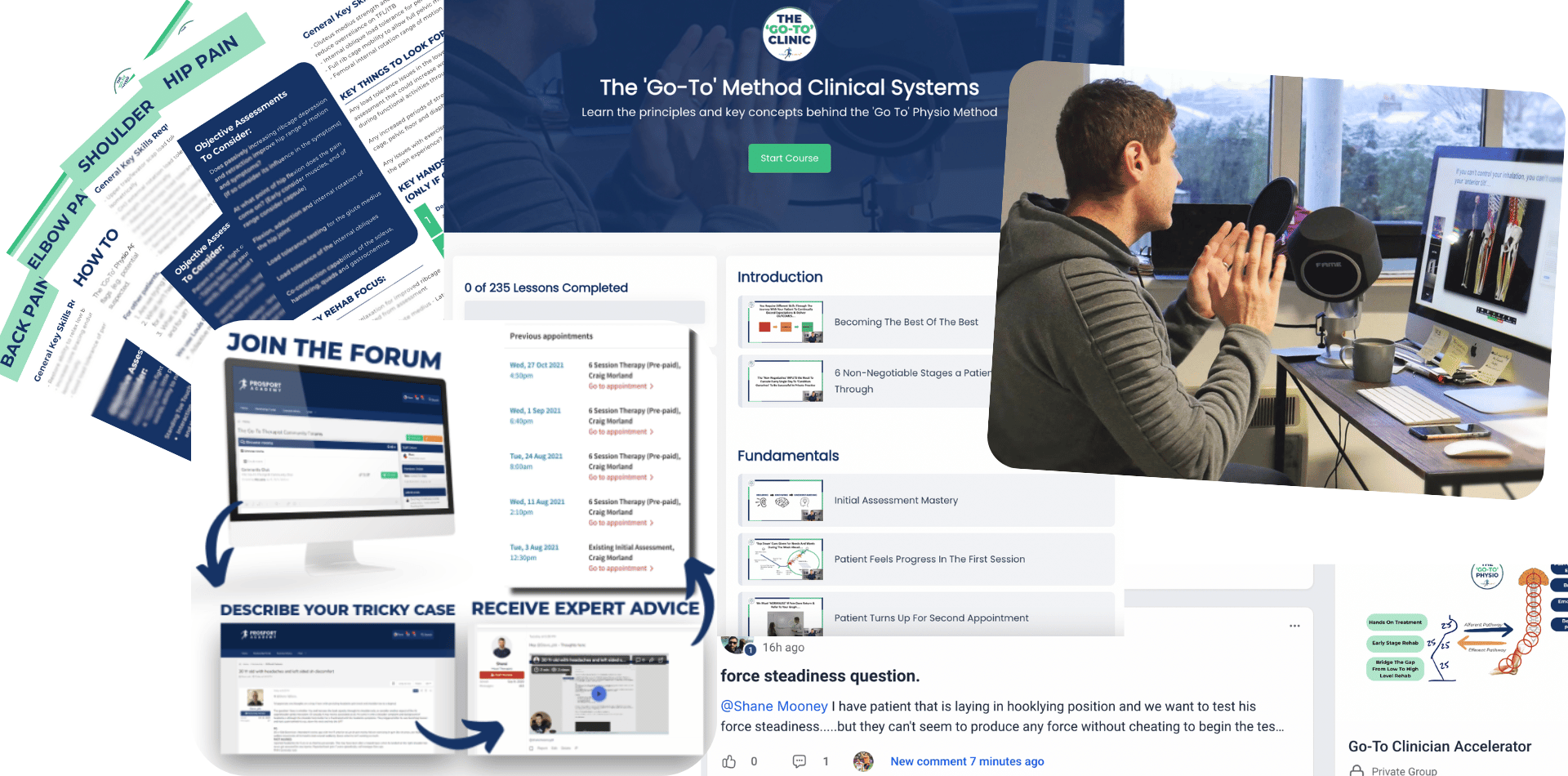
- Access To The Complete ‘Go-To’ Private Practice Therapist Accelerator modules with applied demonstrations
- Q&A opportunity after each lesson
- Bespoke feedback on role plays of critical activities
- Quizzes, cheat sheets & protocol checklists
- ‘Complex Patients’ forum access for support with tricky cases
- Weekly ‘Clinical Reasoning’ scenarios
- Ongoing support and continuing professional development with the master clinician pathway
Who We Have Helped…
Oliver Waite
Crystal Palace FC
Mohamed Barakat
Wadi Degla FC
David Ferguson
Leeds Rhinos Head Physio
Nawal Gurung
Fulham F.C Sports Therapist
David Hanly
Connacht Rugby
Will Franklin
Leeds Utd Physiotherapist
David Grey
David Grey Rehab
Andy Chen
Moment Physical Therapy and Performance
Alex Morrell
Move Physiotherapy
Marty Loughran
Elite Physiotherapy, Northern Ireland
Laura Franklin
Laura Franklin Pilates And Physiotherapy, UK
Lisa Wiles
Hands That Heal, UK
Loretta Aliprandi
National Healthcare, Australia
Andy Ellis
National Healthcare, UK
Bridget Dean
National Healthcare, Australia
Larry Geraghty
Physical Therapy Course Leader
Declan Kearney
Physical Therapy Course Tutor
Dylan Seeley
Cash Based Chiropractor, USA
Nevin Saju
Cash Based PT, USA
Kim Aing
Cash Based PT Owner, USA
Carson Aune
Chiropractor, USA
Steven Tran
Chiropractor, Australia
Amy Bowzaylo
Sports Chiropractor, Bahrain
Mario Ciccone
Osteopath, UK
Eu Gene Chong
Osteopath
Cher Hart
Osteopath, UK
Miles Mitchell-Coop
Sports Therapist
Chloe Wilson
Sports Therapist
Stuart Bertram
Sports Therapist
Saoire Waldron
Podiatrist, Ireland
Adam Smith
Podiatrist, Scotland
David McKechnie
Podiatrist, UK
Rob Moloney
Molo Rehab & Performance
Andy Reay
Head Of S & C, Pure Sports Medicine
John Noonan
F2 Performance Coach
Okey Eze
Sports Massage Therapist
Katie Evans
Sports Massage Therapist
Kate Green
Sports Massage Therapist
Tricia Renshaw
Physical Therapist, USA
Jasper Chang
Athletic Therapist, USA
Edwin Santiagoa
Performance Coach, USA
Greg Stern
Ground Up Physiotherapy
Jill Saban
Physio Clinic Owner, Canada
Sandra Voth
Physiotherapist, Canada
Gina Nelson
Queensland Reds Physiotherapist
Aaron Turnbull
Physiotherapist, Brisbane
Dan Rehder
Brisbane, Australia
Milosz Milito
Osteopath, New Zealand
LeeVan Santos
Hurricanes Physiotherapist
Peter Hughes
All Black 7’s Rehab Physiotherapist
Tommy Brennan
Pain & Performance Clinic, Ireland
Fabio Torres
Portugal
Mira Rühl
Physiotherapist, Germany
Samantha Dunbar
South Africa
Michael Mann
South Africa
Tai Ellis
Cape Town
Jo Leung
Hong Kong
Zaki Hairodin
Singapore
Jonah Chung
Hong Kong
Who Am I

My name is Dave O’Sullivan. I’m a physiotherapist with an extensive background in both professional sports and private practice. I founded the ProSport Academy to help therapists like you feel more capable of growing their business and enhancing their reputation.
I have over 15 years’ experience working with elite athletes across a range of sports, including Rugby Union, Rugby League, Motorsport, and Professional Golf.
While I was working in these high-pressure environments, I noticed there was a lack of educational resources available to physiotherapists – particularly in the field of critical thinking and patient-focused care.
Personally, I would’ve really benefited from a step-by-step system when I was feeling less than capable in my practice. And this is what gave me the idea for ProSport Academy – which has gone on to be a leading provider of advanced physiotherapy education.
My goal is to help therapists overcome feelings of overwhelm and doubt, and become ‘go-to’ professionals in their respective communities. Through ProSport Academy’s courses, I share my expertise and the unique approaches I’ve used to build a rewarding, sustainable physiotherapy business.
My Experience and Expertise
- Since 2015, I’ve helped over 1,500 therapists in over 50 countries improve their confidence.
- I’ve worked as Head Physiotherapist for England Rugby League teams.
- I was the Rehab Physiotherapist for England Rugby Union at the 2019 Rugby Union World Cup in Japan.
- I was the Consultant Physiotherapist to the Wallabies Rugby Union team at the 2023 Rugby Championships and Rugby World Cup in France.
- I run my own private physiotherapist practice in the North of England.
- My qualifications include a BSc (HONS) in Physiotherapy from the University of Huddersfield, and an MSc in Strength and Conditioning from St. Mary’s University, London.
- My physiotherapy clients have included professional superbike racers, professional footballers, Olympic ski and snowboard athletes – and even professional singers.
My mission is to guide ambitious clinicians from competence to mastery, by giving them the skills and guidance they need to never feel frustrated, overwhelmed, or stuck again.
How The Mentorship Program Helps You Get To The Next Level…
Who Is It For?
The ‘Go-To’ Method was designed for…
- Physiotherapists
- Physical Therapists
- Physical Therapy Assistants
- Osteopaths
- Chiropractors
- Sports Therapists
- Licensed Massage Therapists
- Strength Coaches
- Podiatrists
- Kinesiologists
- Pilates Teachers
- Yoga Teachers
- And Other Healthcare Professionals
And... The ‘Go-To’ Method works if you have your own clinic or just working in someone else’s private practice... or even you are thinking of making the jump into private practice…
And your experience level...
So, it doesn't matter if you are a student about to graduate and want to hit the ground running without making years of mistakes and trial and error or you’ve been in the profession for 30+ years…
We've implemented this method with success at all levels...
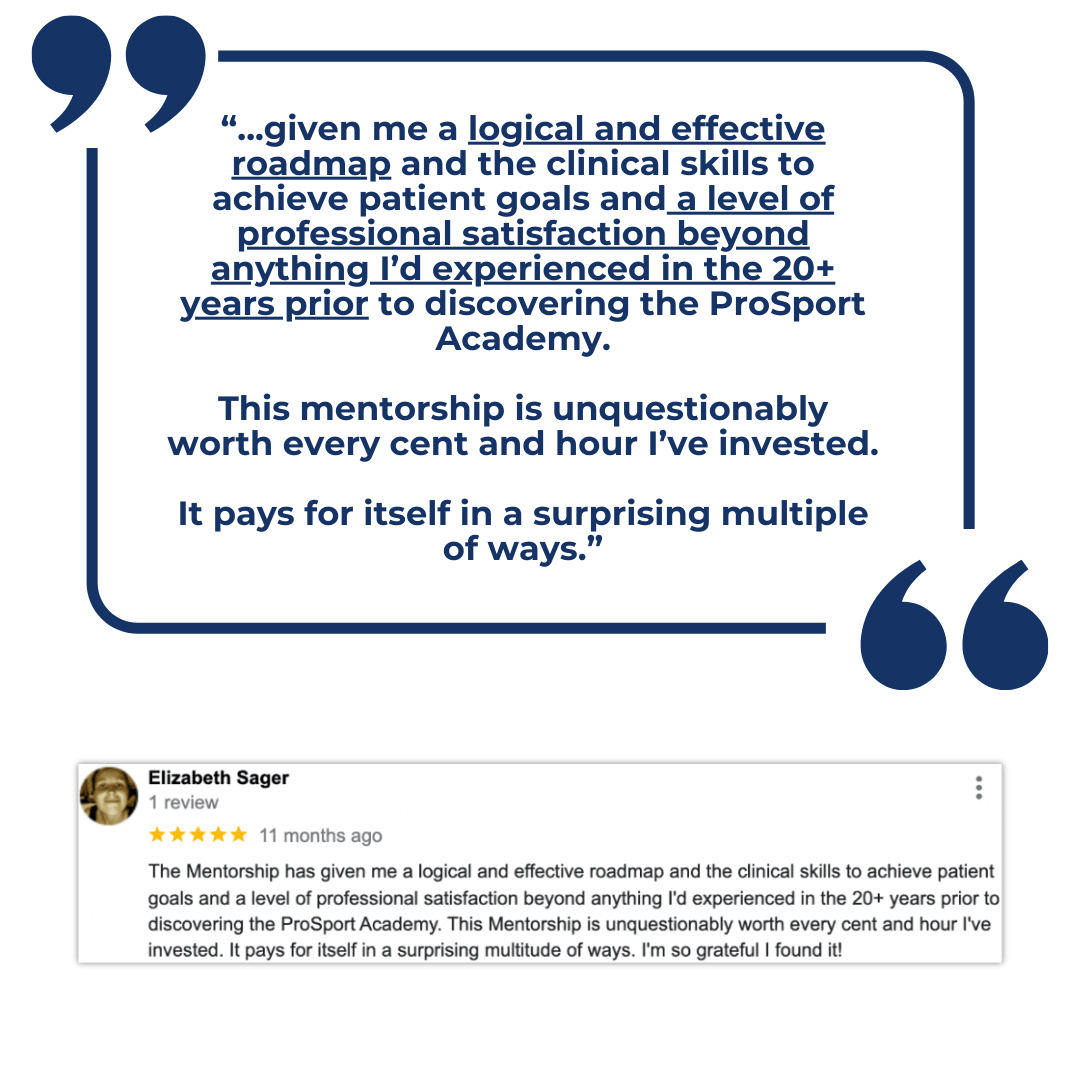
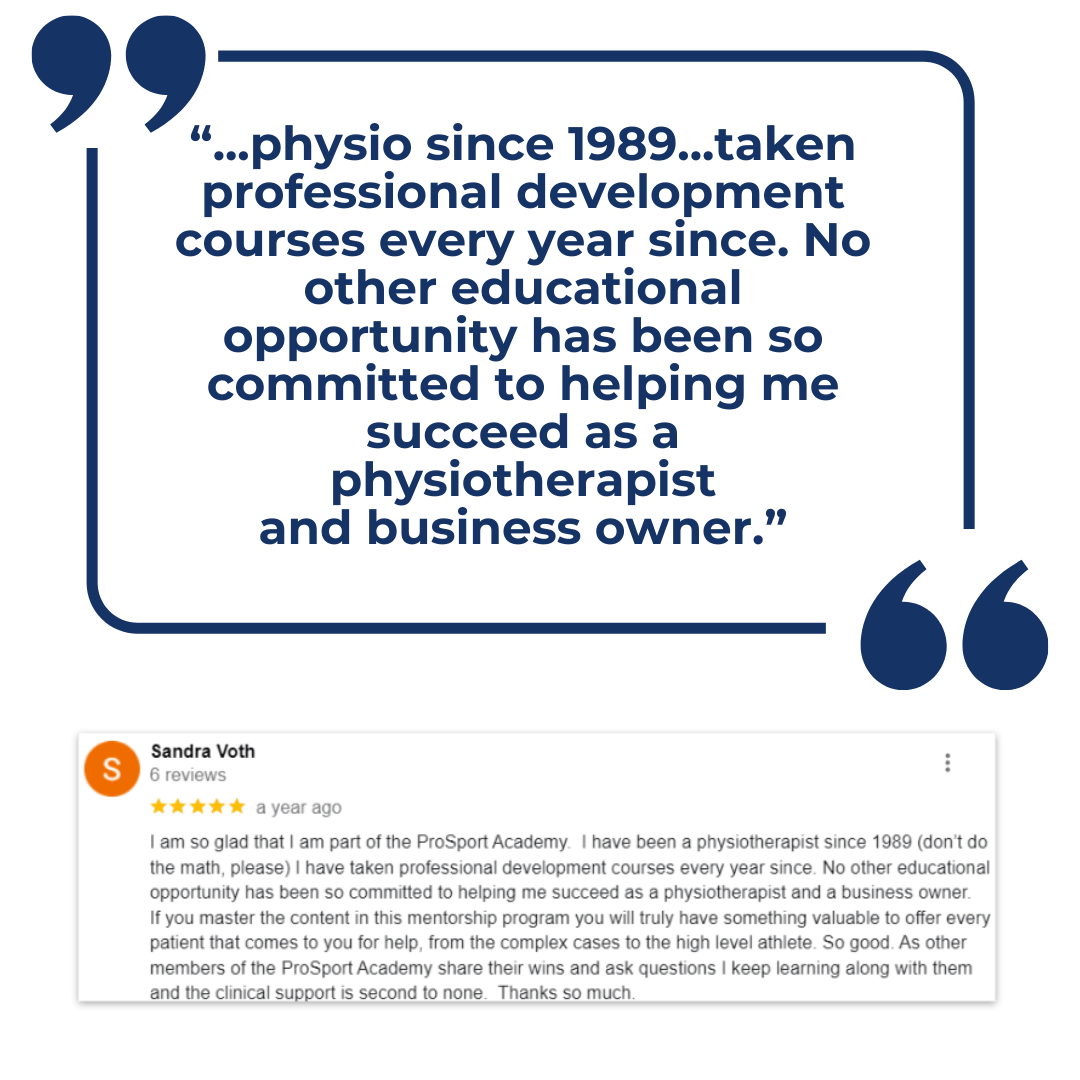

Here’s What Other Physios Say About The Mentorship Program…
